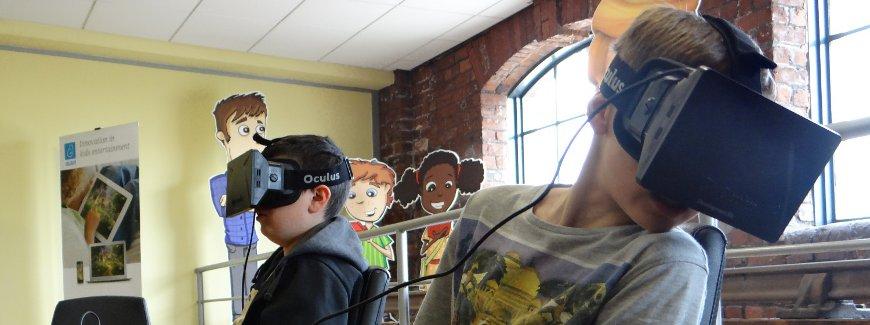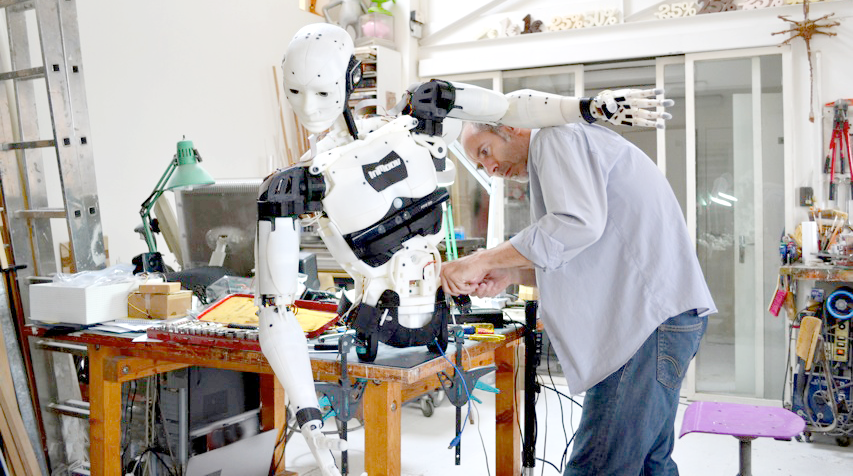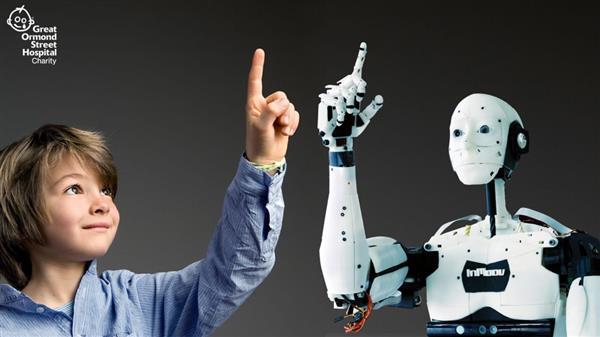“I want to go to the zoo!”
How many times have we all heard, or said, that? Especially kids; going to the zoo is one of those magical memories that will live on in kids’ minds, whether they go once, or every weekend each summer. For some children, though,  going to the zoo just isn’t possible — because some kids must stay in the hospital, confined to their beds or their rooms for treatment of serious illnesses.
going to the zoo just isn’t possible — because some kids must stay in the hospital, confined to their beds or their rooms for treatment of serious illnesses.
What if they could still experience the zoo, though? “What if” is always one of those springboard sorts of questions that can lead to unexpected solutions to problems that used to leave us scratching our heads.
The thinkers behind Robots for Good have come up with a collaborative solution that will allow hospital-ridden children who are patients at the Great Ormond Street Children’s Hospital (GOSH) to virtually visit the London Zoo — all thanks to, of all things, a 3D printed robot riding a Segway-like mover.
This robot — the InMoov Explorer — brings together open source designs with other technology to “give hospitalized children superpowers.” Gael Langevin’s open source 3D printed InMoov robot can be mounted on the Boris Landoni’s Open Wheels, an open source design inspired by the well-known Segway people mover. This robot-on-the-go will be designed to be operated by children from the safety of their hospital beds, as they wear Oculus Rift headgear and use video game-like controllers to direct the robot and see what it sees.
 To further the concept of this feel-good project, the InMoov robots will be assembled by school children who will work with area makerspaces and makers to learn the technology and make the robots for their peers. Those finished robots will be donated to GOSH in London, where young patients will operate them once the robots are sent to the zoo. Through the virtual reality capabilities of the Oculus Rift headset, the robots’ operators will be able to look around, taking in the sights of real lions and tigers and bears in real time. The current goal is to have a completed robot ready to walk the walk (wheel the wheel?) in one year’s time.
To further the concept of this feel-good project, the InMoov robots will be assembled by school children who will work with area makerspaces and makers to learn the technology and make the robots for their peers. Those finished robots will be donated to GOSH in London, where young patients will operate them once the robots are sent to the zoo. Through the virtual reality capabilities of the Oculus Rift headset, the robots’ operators will be able to look around, taking in the sights of real lions and tigers and bears in real time. The current goal is to have a completed robot ready to walk the walk (wheel the wheel?) in one year’s time.
Because key components of this project are open source — the InMoov robot and the Open Wheels — the project can continue to evolve and spread. Improvements can be made, as the blueprints and files are available for free download, so users from around the world can get in on this and continue to make modifications. No corporations are involved here, so everyone participating is doing so out of their genuine desire to improve the project. Ultimately, perhaps thousands of children worldwide will be able to guide these robots to destinations they are unable to visit in person.

Gael Langevin, original inventor of the Inmoov, working on the 3D printed robot in his Paris workshop
The open source documents are provided at Wevolver, which has head offices in Amsterdam and London. Co-founder Richard Hulskes is showing huge enthusiasm and optimism about the project:
“We’re beginning the initial pilot in London, where we are currently in an accelerating stage. But we’re also talking to other hospitals and exploring a world-wide network. It’s a great way to show the whole world what happens when people are not bound by patents, but are instead collaborating to achieve something beautiful. From the moment we first revealed our plans, makers businesses and organizations were already lining up to collaborate. Pretty soon, a sick child in London will be able to visit a zoo in New York thanks to this robot!”
The future seems bright indeed for these kids who may still be confined to hospital rooms but can still experience the world. Of course, there are boundless applications for a robot on wheels that can use virtual reality to interact with its surroundings, as well. Be sure to check out the video below from Robots for Good, outlining the basic principles of the program as it stands now.
What do you think about 3D printed robots going to the zoo? Will you download and maybe improve upon these open source designs? Tell us what you think over at the InMoov Explorer forum thread at 3DPB.com. Check out the video about this project below.
Subscribe to Our Email Newsletter
Stay up-to-date on all the latest news from the 3D printing industry and receive information and offers from third party vendors.
You May Also Like
Gorilla Sports GE’s First 3D Printed Titanium Cast
How do you help a gorilla with a broken arm? Sounds like the start of a bad joke a zookeeper might tell, but it’s an actual dilemma recently faced by...
Nylon 3D Printed Parts Made More Functional with Coatings & Colors
Parts 3D printed from polyamide (PA, Nylon) 12 using powder bed fusion (PBF) are a mainstay in the additive manufacturing (AM) industry. While post-finishing processes have improved the porosity of...
$25M to Back Sintavia’s Largest Expansion of Metal 3D Printing Capacity Since 2019
Sintavia, the digital manufacturing company specializing in mission-critical parts for strategic sectors, announced a $25 million investment to increase its production capacity, the largest expansion to its operations since 2019....
Velo3D Initiates Public Offering in a Bid to Strengthen Financial Foundations and Drive Future Growth
Velo3D (NYSE: VLD) has been among a number of publicly traded 3D printing firms that have attempted to weather the current macroeconomic climate. After posting a challenging financial report for 2023,...
































